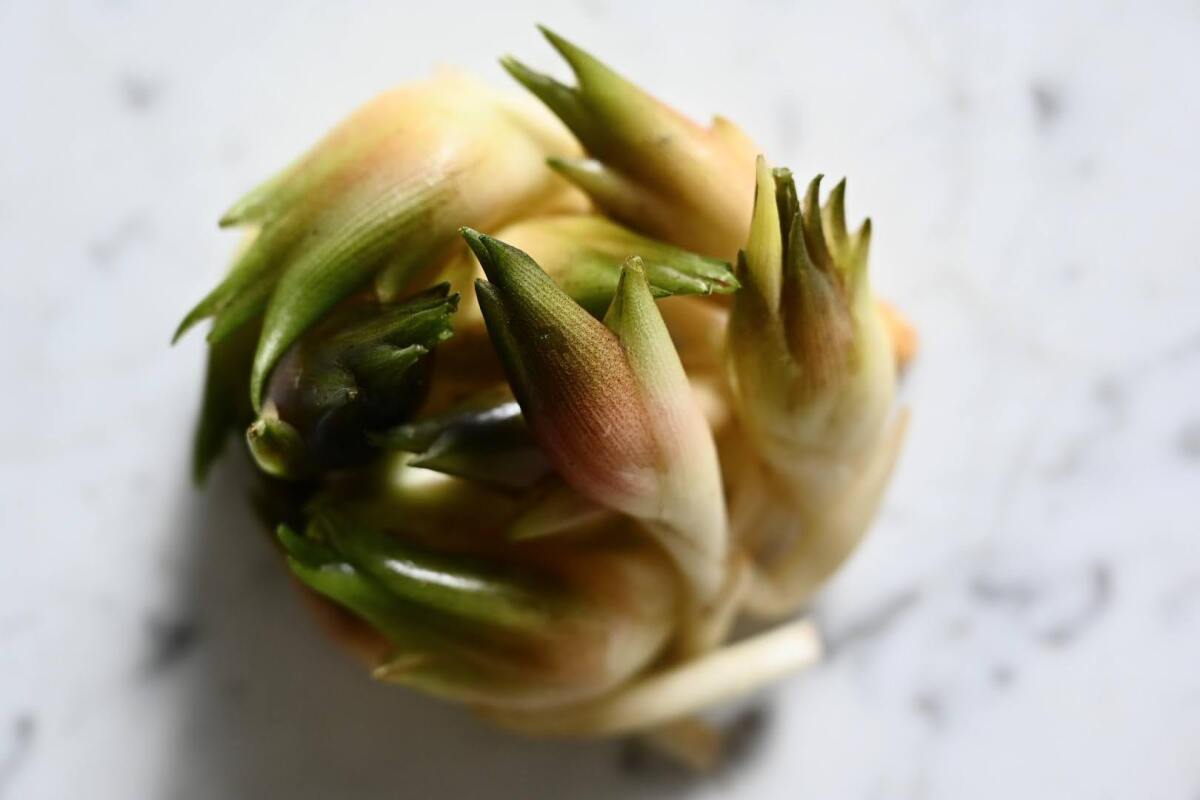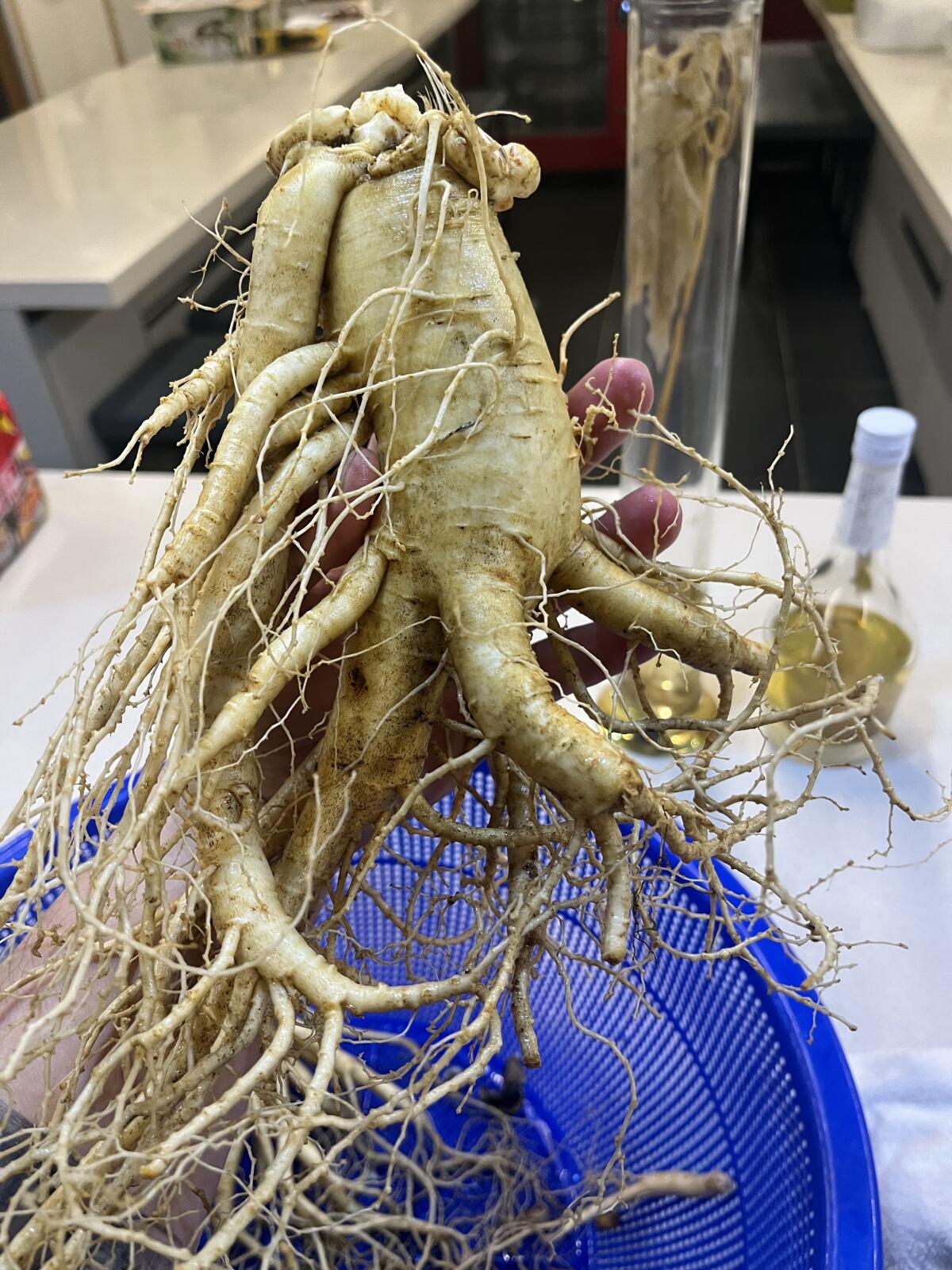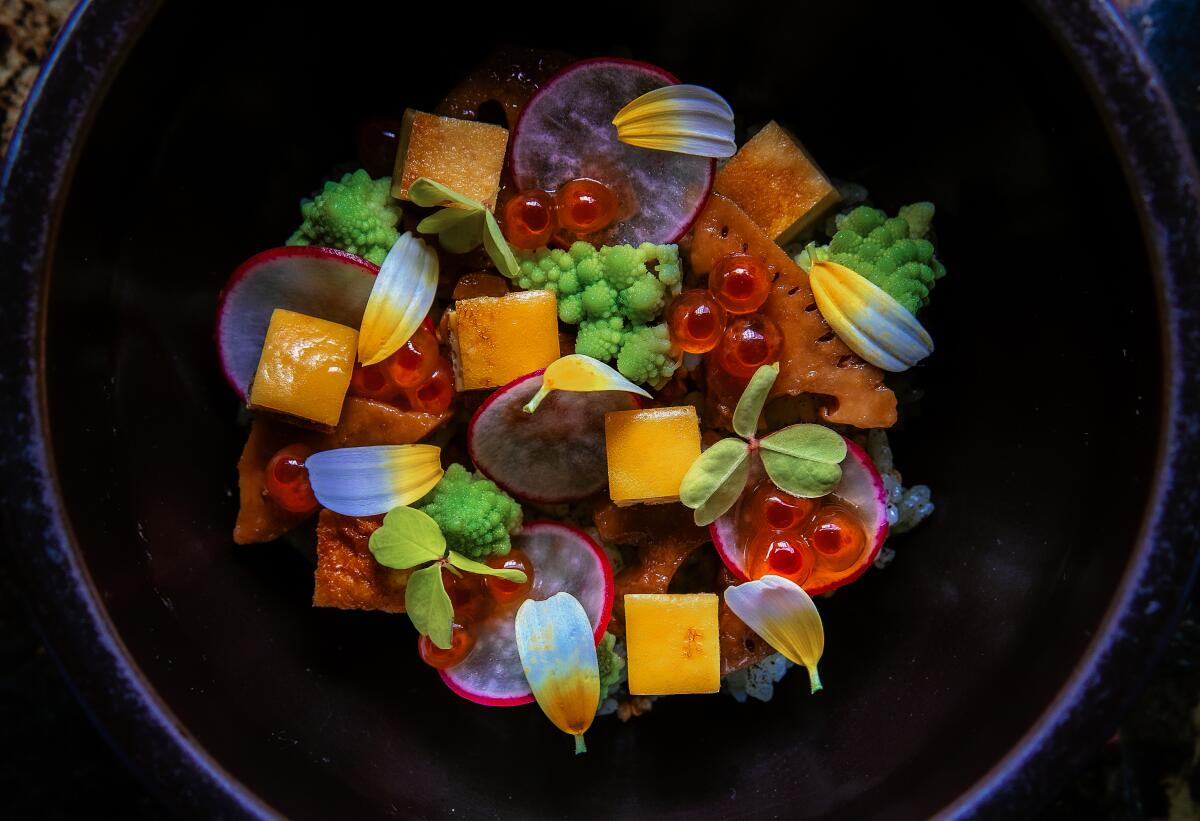5 Asian ingredients you should be cooking with, according to one of L.A.’s greatest Korean restaurants

- Share via
When Kinn’s chef and co-owner Kiyong “Ki” Kim took a several-week trip to his native South Korea earlier this year, he reconnected with his roots partly by hunting for ingredients. He shopped at Seoul markets for foraged produce such as angelica tree shoots and brought those seasonal ingredients back to his North Korean grandmother at her nearby home in Bundang, where they cooked together. The ingredients “were really eye-catching for me because I’ve been in the States for so long,” said Kim, who immigrated when he was 15.
“Very cheesy to say but ingredients are like paints to artists. Sourcing Korean ingredients and cooking what’s considered a ‘modern cuisine’ is like painting with Korean traditional colors to me.”
Kim, 30, rediscovered ways of celebrating Korean vegetables and using food as medicine when he visited renowned chef and Zen Buddhist nun Jeong Kwan (featured in Season 3 of the Netflix show “Chef’s Table”) at her temple located in the Naejangsan National Park, a three-hour drive south of Seoul. When he returned to Los Angeles, he channeled those ideas into the spring tasting menu at his fine-dining Koreatown restaurant, which changes every three months. Here he shares five ingredients he uses on his menus and in Korean cooking.
What does modern Korean cooking taste like in Los Angeles? A chef with a tiny restaurant and concise tasting menu offers a compelling answer.
Myoga ginger buds
Myoga ginger, a stunning plant harvested for its white- and rosy-hued flower buds and shoots instead of its knobby root, is a delicacy in Japanese and Korean cooking. Less spicy and more aromatic, myoga still has the distinct taste of more widely available ginger. Kim likes to pickle whole crunchy myoga buds in a mixture of soy sauce, rice vinegar, sugar and water. After he ferments them in a jar in the refrigerator for a couple of weeks, he’ll quarter them and treat them as banchan, served with rice. When it’s available, and if asked, Kim also will serve the soy-pickled myoga ginger with charcoal-grilled fish as part of a “secret” menu that goes beyond his seven-course tasting. Myoga ginger can be found at Japanese markets such as Mitsuwa and Girl & Dug Farm.
Crown daisy leaves
Chrysanthemum is more commonly referred to as “crown daisy” in Korean cuisine and “is one of the few herbal components to Korean dishes,” said Kim. The chef likes to use its crisp greens — which have grassy and mildly bitter notes — in seafood soups, bringing a brightness to it that balances the fishiness. Also a good complement to fatty foods, at Kinn, its leaves are pureed with dashi and punched up with dijon mustard, served as an accompaniment to flame-seared, thinly sliced dry-aged beef. His grandmother’s favorite way to cook it? Deep-fry the leaves, tempura-style, and eat it with rice. The greens are commonly found at Asian markets.

Ginseng
The aromatic ginseng, which resembles a parsnip with forked roots, is often touted for its health benefits in Korean and Chinese medicine and cooking and can be found at Asian markets. An earthy root with hints of bitterness and a sweet licorice aftertaste, it’s believed to boost energy, like caffeine. It’s a popular Korean tradition to eat samgyetang — a soup consisting of a whole Cornish hen stuffed with ginseng, sweet glutinous rice, jujubes, chestnuts and garlic — on the hottest days of summer. Kim has been infusing ginseng in soju for more than a year and will sometimes serve it to Kinn customers on special occasions.
Lotus root
Lotus roots, which have a mild and slightly sweet flavor profile, are long cylindrical stems that, when sliced, appear to have a lace-like pattern. A versatile and crunchy ingredient often used in banchan, it can be soy-braised as an accompaniment to rice. At Kinn, Kim uses it as one of the toppings on his springtime bibimbap, but to retain the crunchy texture of the root, he sautees it before seasoning it with mirin and Chinese dark soy sauce. His grandmother likes to peel and slice it, then coat it in flour and grill it. At the temple, Kwan tossed it with mountain yam, soy sauce, sesame oil and black sesame seeds as a Korean salad called “muchim.” “When you’re cooking with good ingredients, you don’t really need to do much,” said Kim about its simplicity. While different terroirs can give lotus root unique flavor profiles, Kim is a fan of the ones grown in California, which are easily found in Asian markets.

Multigrain rice
“In Korean cuisine, you’re not there to finish everything on the table,” said Kim. “You’re there to finish your bowl of rice and eat however many side or main dishes that are available with it.” While Kim says white short grain rice is essential, he finds it is unique to Korean cooking to regularly mix different proportions of other grains into the rice, like brown and purple varieties, as well as peas, beans and quinoa. While Kim has previously served his favorite version of multigrain rice — a mixture of white, brown and forbidden grains — at Kinn, the current menu features a springtime bibimbap with short-grain white rice seasoned with seaweed puree. The grains can be found at Asian markets.
More to Read
Eat your way across L.A.
Get our weekly Tasting Notes newsletter for reviews, news and more.
You may occasionally receive promotional content from the Los Angeles Times.










